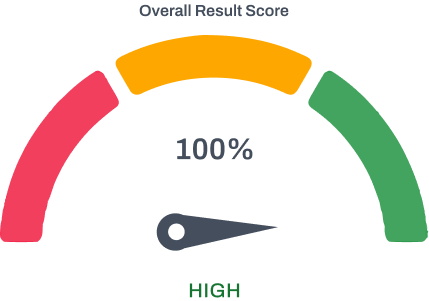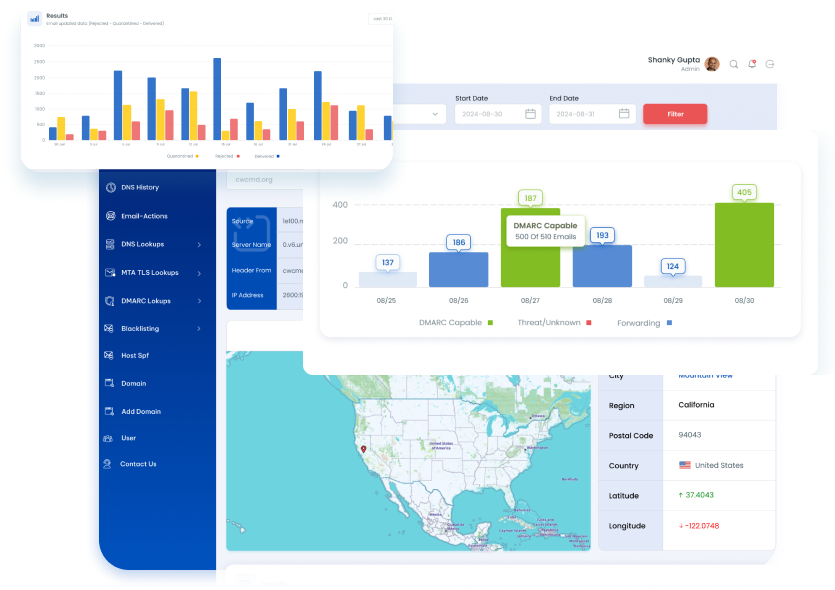DS Records Lookup
Check and confirm your domain's DNSSEC DS records to enhance DNS security
Check and confirm your domain's DNSSEC DS records to enhance DNS security
| DS | |||
|---|---|---|---|

|
 Scanner results
Scanner results



A domain with a high security level has strong SPF, DKIM, and DMARC configurations. This significantly reduces the risk of email impersonation and phishing attacks.
 DMARC
DMARCSuccess! Your DMARC record is valid. This means your email security is properly configured to protect against spoofing and phishing attacks. Keep up the good work and continue to monitor your DMARC reports to maintain your domain's security.
 SPF
SPFSuccess! Your SPF record is valid. This means your domain is correctly configured to specify which mail servers are authorized to send email on its behalf.
 DKIM
DKIMSuccess! Your DKIM record syntax is valid. This means your domain is correctly configured to verify that incoming messages are actually from you and haven't been modified during transit. Keep up the good work!
 BIMI
BIMIGood job! Your BIMI lookup is valid. This means your brand logo will display in supported email clients,enhancing your brand visibility and trust among email recipients. Continue to monitor your BIMI record to maintain your domain's security.
 MTA STS Record
MTA STS Record
Your MTA-STS record is in good shape. No further action is needed.
 TLS RPT Record
TLS RPT Record
Success! Your TLS-RPT record is valid. This means your domain is correctly configured to receive reports about TLS security issues, helping you monitor and improve your email security. Keep up the good work!
 Blacklist Domain
Blacklist Domain
Success! The domain 'softuvo.com' is not on the blacklist

DS (Delegation Signer) records are crucial for DNSSEC (Domain Name System Security Extensions) as they help secure the delegation of DNS zones. Accurate DS records ensure that DNSSEC validation is correctly implemented, enhancing your domain’s security and integrity.

Discover the key advantages and powerful upgrades that our tools bring to your email security strategy.

Discover the Key advantages and powerful upgrades that our tools bring to your Email Security Strategy

 01
01
Delivers detailed reports on DS record configurations, aiding in thorough analysis and audits.

 02
02
Offers real-time retrieval of DS records, enabling prompt verification and action.

 03
03
Ensures that DS records are compatible with various DNSSEC configurations and standards.

 04
04
Helps prevent domain resolution issues by ensuring accurate DS record settings, thus minimizing potential disruptions.
To add or update DS records, you need to configure them in your DNS zone file and then update your parent zone with the new DS records.
A DS record links a DNSKEY record in the parent zone, providing a hash of the DNSKEY for verification. The DNSKEY record contains the actual public key used for DNSSEC.
Use the DS Records Lookup tool to compare the key tag and digest values with those in your DNSKEY record to ensure they match.
Mismatched DS records can lead to DNSSEC validation failures, potentially causing issues with DNS resolution and domain security.
Yes, the tool works regardless of your DNS provider, as long as the domain has DS records configured in the DNS zone.
Regularly check DS records, especially after making changes to DNSKEYs or DNSSEC configurations, to ensure continued validity.
Yes, consult DNSSEC documentation, RFC 4034, and RFC 4035 for detailed information on DS record formats and DNSSEC specifications.
While the tool helps verify DS records, for deployment issues, you may need to review your DNSSEC configuration and consult additional resources or support.
The tool can complement other DNS security tools by providing specific verification for DS records, helping ensure overall DNSSEC integrity.
Double-check your DNSSEC configuration, verify that the DS records are properly propagated, and consult with your DNS provider for further assistance.
